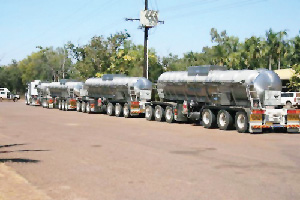
Real cost of producing an ounce of gold much higher than miners report – Gold Fields chief

By Kevin Skinner of Field Public Relations for Paydirt Media.
According to Gold Fields Limited Chief Executive, Nick Holland, the gold industry worldwide is underreporting its true costs to produce one ounce of gold, a trend that became noticeable in 2017.
Addressing the second day of the three day Paydirt 2019 Africa Downunder mining conference in Perth, Australia, Mr Holland said the potential under-reporting was occurring in the context of a gold industry that generally was under-capitalised.
Gold Fields Limited is a global gold major with four mines in Western Australia as well as numerous gold mines and development projects in Peru, Chile, Ghana and South Africa.
“We face a situation where gold miners have not been spending enough capital to sustain production, let alone grow production,” Holland said.
“Any growth capital people speak about is in fact largely sustaining capital,” he said. “On the face of it, cost performance of the gold industry has been good – but this has been at the expense of sustainability of production.
“The cost to sustain production is increasing. The industry is mining more tonnes at lower grade to maintain ounces. Therefore, replacement is becoming more expensive as miners are having to go deeper to extract lower grade gold ore from more complex geological structures. More complex geology simply means higher processing costs, lower recoveries and harder rock.”
The Gold Fields executive also questioned the merit of consolidation – with “big bang mergers” simply resulting in assets being recycled and rebadged.
“Consolidation does not address the undercapitalisation of the world’s gold industry,” Holland argued.
“In 2013, the World Gold Council (WGC) defined the true cost metrics under the All In Sustaining Cost (AISC) protocols and also defined non–sustaining costs. Between 2012-2016, AISC cost trends per US$/oz decreased at a rate of just under 7% per year, but increased from 2017 onwards within an environment where there was a notable decrease in sustaining capital from US$313/oz in 2012 to US$166 in 2016 – a level maintained since.
“Gold exploration budgets were also slashed with the bulk of such exploration over the past five years being brownfields projects and near-mine development.
“At the same time, growth in global mine supply slowed significantly, increasing only 1.8% in 2018 compared to 6.2% in 2013. Some 30% of global gold reserves are currently associated with assets where a construction decision is yet to be made.
“We therefore have an emerging situation where the industry can potentially sustain production at current levels for the next few years before entering a period of secular decline in the longer term.”
Holland cited the World Gold Council’s estimates of an incentive price of US$1,500/oz to maintain global production at current levels within an environment where the average reserve life of the industry has decreased from >25 years to <15 years in just seven years.
This coincided with forecasts of a fall in average grades from current levels of 7g/t to 1.25g/t by 2025 and a forced increase in total throughput volumes from 4Mtpa to ~5.5Mt per year.
“It questions whether the gold industry is telling its full cost story,” he said.
“Last year, some AISC reports by the industry excluded some capital and exploration costs that should have been included as per the 2013 World Gold Council guidelines. The amount of capital and exploration excluded in the reported AISC has been increasing over the past five years at a level equivalent to around US$30/oz.
“Despite the obvious slowdown in production, expenditure classified by the industry as ‘growth’ or ‘non-sustaining’, has increased significantly.
“Growth capital is therefore not really growth as the industry is not significantly increasing production, especially not the majors. In 2018, almost half of all of the gold capital and exploration spend was classified as non-sustaining and therefore not disclosed in reported costs.”
The real cost issue was exacerbated by further relaxations by the WGC late last year of the definition of non-sustaining costs. According to Holland, this effectively allows gold companies more flexibility in allocating their costs.
“As such, AISC will become less representative of what it really costs to produce an ounce of gold yet the reality is actual costs are higher than the industry is reporting,” he said adding that gold producers need to maintain discipline with how they classify growth and be more transparent as to their cost reporting protocols.












































